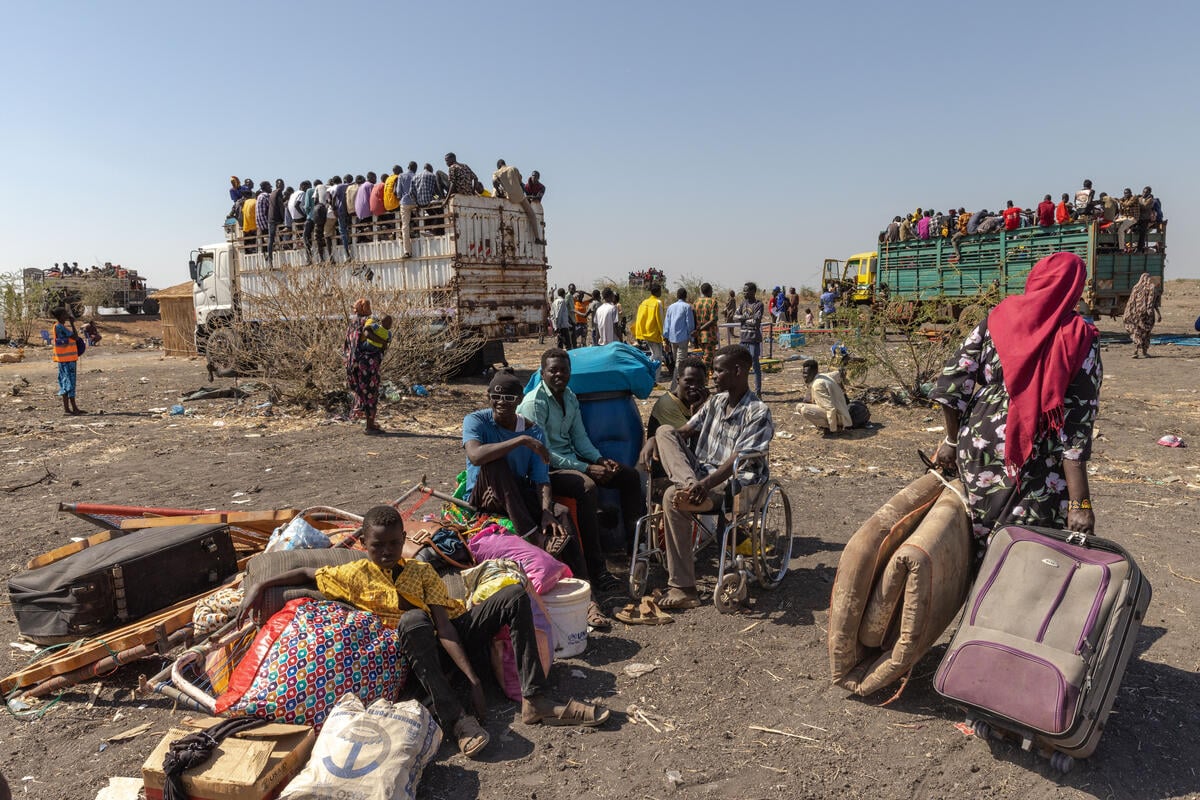Afgooye corridor fast becoming the capital of Somalia's displaced
Afgooye corridor fast becoming the capital of Somalia's displaced
Amid the deteriorating situation in Mogadishu, UNHCR has noted significant growth in the numbers of displaced people in the Afgooye corridor, which lies to the north-west of the city.
Following a new assessment we have revised upwards our estimate of the number of people in the Afgooye corridor to 410,000. Since the escalation of the conflict in Somalia in 2007, a number of makeshift sites sprung up along this stretch of road leading from Mogadishu to Afgooye town. Our previous estimate, as of September 2009, put the number at 366,000. The new assessment is the result of a complex, three-month long exercise led by UNHCR on behalf of humanitarian agencies in Somalia. Due to the difficult security situation and lack of access it was based on high-resolution satellite imagery from which we extrapolated the population size.
The satellite images indicate that there has been very significant recent new building of both permanent and temporary structures. We were able to identify and map every individual building and temporary shelter. Overall there are 91,397 temporary shelters and 15,495 permanent ones in the area.
To determine the population size we measured the habitable surface areas of every dwelling and applied different population densities to permanent and temporary structures, based on population densities from comparable areas in Somalia. In addition to some 410,000 displaced people in Afgooye, we estimate there are 55,000 people in Dayniile (to the north of Mogadishu), 15,200 in the Bal'cad corridor (the northern periphery of Mogadishu City) and 7,260 in Kax Shiiqaal (the city's western periphery). Mogadishu's displaced population is harder to be precise about, but out estimate is that there are 372,000 IDPs in the capital.
Reflecting the increased population has been a rapid urbanization of the Afgooye corridor - clearly apparent in the satellite imagery. Entire new towns have replaced makeshift IDP sites with more people living in rudimentary buildings alongside the tens of thousands of shelters made of cloth and fabric.
Overall it appears that structures in Afgooye are becoming more permanent as hopes fade for a safe return to the capital any time soon. Over the past four weeks alone, almost 12,000 people have fled to the Afgooye corridor, which has become the third largest urban area in Somalia after Mogadishu, and Hargeisa in Somaliland.
Living conditions in the Afgooye corridor are extremely difficult. People struggle for food and other basic necessities as the precarious security situation is preventing humanitarian agencies from accessing people in need. Some assistance is getting there through local partners, but the amounts are minuscule in comparison with the needs. Many people take risks and walk to Mogadishu and back every day in search of a daily living. Basic services such as health and education are scarce and rudimentary.
The findings of this latest assessment in Afgooye corridor have also pushed upward our overall estimate of the total number of IDPs in Somalia to 1.46 million. In addition Somalia has produced some 614,000 Somali refugees, most of whom are in neighbouring countries.














